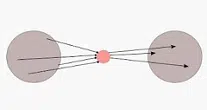In order to know the meaning of the term pangenesis, it is necessary, first of all, to discover its etymological origin. In this case, we can state that it is a word that derives from Greek. More specifically, it is the sum of the following lexical components of said language:
-The prefix “pan-”, which is used to indicate “everything”.
-The element “genos”, which is synonymous with “beget” or even “family”.
-The suffix “-sis”, which is used to highlight the “action”.
The idea of pangenesis was used in the field of biology with reference to a theory about reproduction and inheritance . According to pangenesis, the various structures of the organism generated sediments called gemmules , which reached the gametes through the blood.
 According to this theory , new individuals were formed from the fusion of the gemmules of the cells . Charles Darwin himself appealed to pangenesis to explain how inheritance worked within the framework of the evolution of species .
According to this theory , new individuals were formed from the fusion of the gemmules of the cells . Charles Darwin himself appealed to pangenesis to explain how inheritance worked within the framework of the evolution of species .
Specifically, it is considered that among the first figures who advocated and defended pangenesis are Aristotle, Democritus and Anaxagoras. However, the first was the pioneer in postulating this theory.
Through pangenesis, Darwin and other scientists postulated that alterations in gemmules caused by the influence of environmental conditions motivated random variations at the individual level. Pangenesis also maintained that gemmules exhibited the modifications of the organisms from which they came and that the mixture of gemmules generated the mixture of traits .
Pangenesis, in short, maintains that what an individual does is passed to his descendants through the sediments of his organs (that is, the gemmules that reached the sexual cells). This would mean that a subject with highly developed muscles due to physical exercise would have descendants with similar characteristics, for example.
Exactly Charles Darwin postulated his theory of pangenesis in a book that was published in 1868. We are referring to the one titled “The variation of animals and plants under domestication.”
It is interesting to know that after Darwin's approach to pangenesis, there were other scientists who decided to develop their own. This would be the case, for example, of the Dutch geneticist and botanist Hugo Marie de Vries (1848 – 1835). Specifically, he presented it in his book “Intracellular Pangenesis”, which was published in 1889.
With the passing of the years and scientific discoveries, pangenesis was refuted and the validity of different theories was demonstrated. The Englishman Francis Galton was one of the experts who refuted it through an experiment: this Briton transfused blood between different rabbits and explained that their descendants did not have the characteristics predicted by pangenesis.
However, he was not the only one who refuted the theory of pangenesis. So did the English engineer and inventor Fleeming Jenkin (1833 – 1885). Specifically, he published certain objections to it in an article published in “North British Review”.
